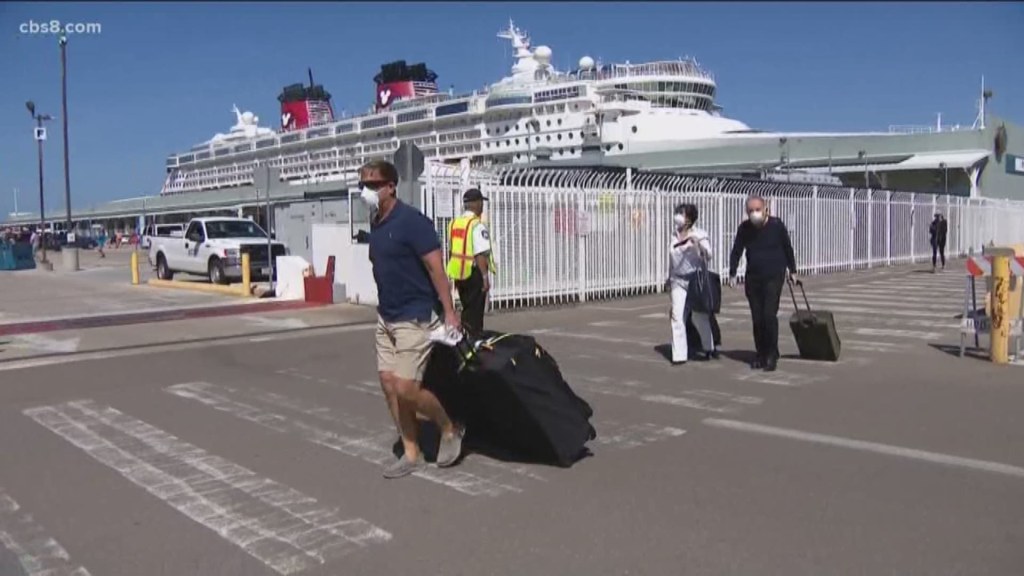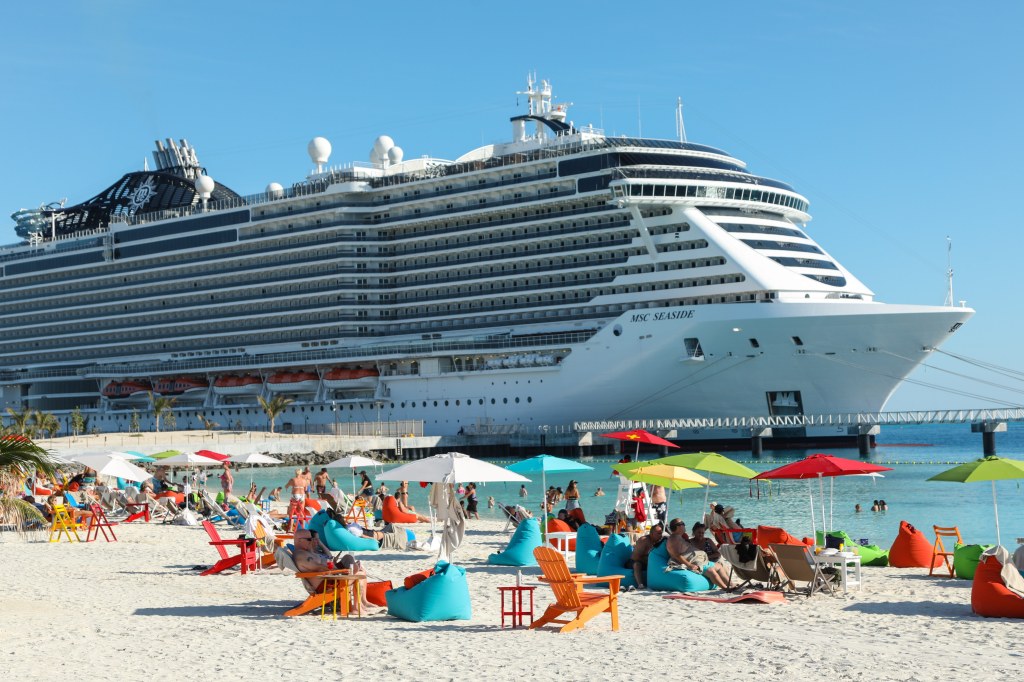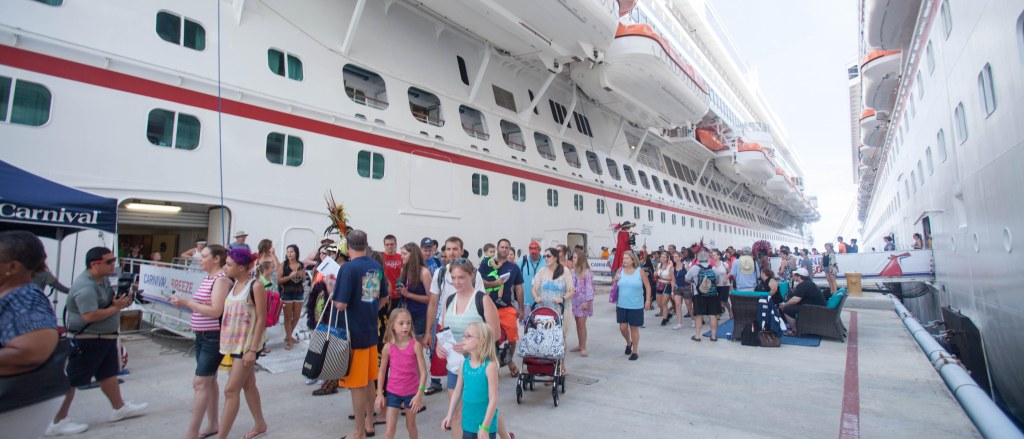Disembarking a Cruise Ship: Everything You Need to Know
Introduction
Hello, cruise ship enthusiasts! In this article, we will explore the process of disembarking a cruise ship. Whether you are a seasoned cruise traveler or a newbie, understanding how to navigate the disembarkation process is essential. From knowing when and where to disembark to understanding the pros and cons, we’ve got you covered. So, let’s dive in!
What is Disembarking a Cruise Ship? 🚢
Disembarking a cruise ship refers to the process of leaving the ship at the end of your cruise vacation. It involves following specific procedures and protocols set by the cruise line and local authorities to ensure a smooth and efficient transition from ship to shore.
Overview

Image Source: cbs8.com
Disembarking a cruise ship can be an exciting yet overwhelming experience. Understanding the necessary steps and having a clear plan in mind can help make the process more enjoyable. Here’s everything you need to know about disembarking a cruise ship:
Who Manages Disembarkation? 🕴️
The entire disembarkation process is coordinated by the cruise line’s staff, including the ship’s crew and guest services team. They work together to ensure that all passengers safely and efficiently leave the ship.
Procedures

Image Source: usatoday.com
To manage the disembarkation process, the cruise line establishes specific procedures that passengers must follow. These procedures include completing customs and immigration requirements, settling any outstanding onboard expenses, and collecting necessary belongings.
When Does Disembarkation Occur? ⏰
Disembarkation typically takes place on the final day of the cruise. The exact timing varies depending on the cruise line, itinerary, and port regulations. Passengers are usually given a designated disembarkation time based on their cabin location or priority status.
Early Disembarkation

Image Source: amazonaws.com
Some cruise lines offer early disembarkation options for passengers with early flights or specific time constraints. These passengers are given priority to leave the ship ahead of others, allowing them to catch their transportation or continue their journey promptly.
Where Does Disembarkation Occur? 📍
Disembarkation takes place at the designated cruise terminal or port. The exact location will be communicated to passengers by the cruise line and announced onboard. It is crucial to pay attention to the instructions provided to ensure a smooth and hassle-free disembarkation.
Customs and Immigration
Upon disembarking, passengers are required to go through the customs and immigration process. This involves presenting necessary travel documents, such as passports and visas, to the authorities for inspection and verification.
Why Is Disembarkation Important? ❓
Disembarkation is a crucial part of the overall cruise experience. It marks the end of your voyage and signifies the transition from ship life to returning home or continuing your travels on land. Proper disembarkation ensures a seamless conclusion to your cruise vacation.
Smooth Transition
By following the disembarkation procedures and guidelines, passengers can ensure a smooth transition from the ship to the shore. This includes collecting any belongings, settling final payments, and complying with customs and immigration requirements.
How to Disembark a Cruise Ship? 🔄
Disembarking a cruise ship involves several steps that must be followed to ensure a successful departure. Here is a step-by-step guide on how to disembark a cruise ship:
Step 1: Review Disembarkation Information
Prior to disembarkation day, review the disembarkation information provided by the cruise line. This will contain specific instructions, timing, and any necessary forms or documentation.
Step 2: Pack and Prepare
Pack your belongings the night before disembarkation and ensure that all necessary items are readily accessible. Settle any outstanding onboard expenses and double-check your cabin to ensure everything is accounted for.
Step 3: Attend Disembarkation Briefing
On the final evening of your cruise, attend the disembarkation briefing held by the ship’s crew. This will provide important information about the process, timing, and any last-minute changes.
Step 4: Settle Bills and Return Items
Visit the guest services desk to settle any outstanding bills and return any rented items, such as towels or equipment. This will help expedite the disembarkation process and prevent any delays.
Step 5: Disembarkation Day
On disembarkation day, follow the instructions provided by the cruise line. Pay attention to the designated meeting location and time for your assigned disembarkation group or color.
Step 6: Clear Customs and Immigration
Upon leaving the ship, proceed to the customs and immigration area. Have your travel documents ready for inspection and follow any additional instructions provided by the authorities.
Step 7: Collect Luggage and Depart
After clearing customs and immigration, locate your assigned luggage area and collect your belongings. From there, follow the designated exit and transportation options to continue your journey.
Advantages and Disadvantages of Disembarking a Cruise Ship
Advantages
1. Time to Explore New Destinations: Disembarking a cruise ship allows you to explore new destinations and immerse yourself in local culture.
2. Flexibility in Travel Plans: Once you disembark, you have the freedom to plan your own itinerary and customize your travel experience.
3. Extended Vacation: Disembarking in a different port than your embarkation point allows you to extend your vacation and explore additional cities or countries.
4. Opportunity for Land Excursions: Disembarking a cruise ship opens up opportunities for exciting land excursions and activities that may not be available onboard.
5. Immersive Cultural Experiences: Disembarkation allows you to immerse yourself in the local culture, interact with locals, and try authentic cuisine.
Disadvantages
1. Limited Time in Each Destination: Disembarking a cruise ship often means having limited time to explore each destination, as ships typically have a set itinerary.
2. Logistics and Transportation: Planning transportation and logistics for disembarkation can be challenging, especially in unfamiliar ports.
3. Potential Language Barriers: Depending on the destination, language barriers may arise when disembarking, making communication and navigation more difficult.
4. Additional Expenses: Disembarking can lead to additional expenses such as accommodation, transportation, and meals outside of the cruise package.
5. Missing Out on Onboard Amenities: Once you disembark, you no longer have access to the onboard amenities and activities provided by the cruise ship.
Frequently Asked Questions (FAQs)
1. Can I disembark the cruise ship before the scheduled disembarkation day?
No, passengers are generally required to follow the scheduled disembarkation day and time set by the cruise line. Early disembarkation options are available for specific circumstances.
2. What happens if I miss the designated disembarkation time?
If you miss the designated disembarkation time, it could result in delays or complications. It is important to communicate with the ship’s staff and follow their instructions to resolve the situation.
3. Can I leave the ship without my luggage?
No, passengers are required to collect their luggage before leaving the ship. Luggage is typically organized and available for collection in designated areas at the cruise terminal.
4. Are there any restrictions on items I can bring off the ship?
Yes, there may be restrictions on certain items when disembarking the ship. It is important to follow the guidelines provided by the cruise line and local authorities to ensure compliance.
5. Can I rejoin the ship after disembarking?
In most cases, passengers cannot rejoin the ship after disembarking. However, some cruise lines may offer specific options for rejoining the ship at designated ports during the same itinerary. It is essential to check with the cruise line for more information.
Conclusion
Disembarking a cruise ship is a significant part of the overall cruise experience. By understanding the procedures, timing, and logistics involved, passengers can ensure a smooth and efficient transition from ship to shore. Whether you choose to explore new destinations, extend your vacation, or embrace immersive cultural experiences, proper disembarkation will help you make the most of your cruise journey. So, take the time to plan, follow the guidelines, and embark on your next adventure confidently!
Final Remarks
Disclaimer: The information provided in this article is for general informational purposes only. While we strive to keep the content up to date and accurate, it is essential to check with the respective cruise line and local authorities for the latest disembarkation requirements, procedures, and regulations. Happy cruising!